Novel Abrasive-Impregnated Pads and Diamond Plates for the Grinding and Lapping of Single-Crystal Silicon Carbide Wafers
Abstract
:1. Introduction
2. Experimental Details
2.1. Preparing the SiC Wafer
2.2. The Grinding Processes
2.3. The Lapping Processes
2.4. The Experiment Processes and Measurements
2.5. Theoretical Analysis
3. Results and Discussion
3.1. The Wear Rate by Grinding
3.2. Material Removal Rate and Surface Roughness of the SiC Wafers Achieved by Grinding
3.3. Material Removal Rate and Surface Roughness Achieved by Lapping
4. Conclusions
Author Contributions
Funding
Acknowledgments
Conflicts of Interest
References
- Zhou, Y.; Pan, G.; Zou, C.; Wang, L. Chemical Mechanical Polishing (CMP) of SiC Wafer Using Photo-Catalyst Incorporated Pad. J. Solid State Sci. Technol. 2017, 6, 603–608. [Google Scholar] [CrossRef]
- Fan, D. A study on the polishing mechanism of silicon carbide (SiC) optic surface. Adv. Mater. Res. 2011, 337, 474–478. [Google Scholar] [CrossRef]
- Shi, X.L.; Pan, G.S.; Yan, Z.; Gu, Z.H.; Hua, G.; Zou, C.L. Characterization of colloidal silica abrasives with different sizes and their chemical–mechanical polishing performance on 4H-SiC (0001). Appl. Surf. Sci. 2014, 307, 414–427. [Google Scholar] [CrossRef]
- Zhou, Y.; Pan, G.S.; Shi, X.L.; Zhang, S.M.; Gong, H.; Luo, G.H. Effects of ultra-smooth surface atomic step morphology on chemical mechanical polishing (CMP) performances of sapphire and SiC wafers. Tribolgy Int. 2015, 87, 145–150. [Google Scholar] [CrossRef]
- Ho, J.K.; Huang, C.Y.; Tsai, M.Y.; Tsai, C.C. Investigation of Polishing Pads Impregnated with Fe and Al2O3 Particles for Single-Crystal Silicon Carbide Wafers. Appl. Sci. 2016, 6, 89. [Google Scholar] [CrossRef] [Green Version]
- Harshaand, P.; Tewari, U.S. Two-body and three-body abrasive wear behaviour of polyaryletherketone Composites. Polym. Test. 2003, 22, 403–418. [Google Scholar] [CrossRef]
- Ke, X.; Qiu, L.; Wang, C.; Wang, Z. Tentative Investigations on Reducing the Edge Effects in Pre-Polishing the Optics. Appl. Sci. 2020, 10, 5286. [Google Scholar] [CrossRef]
- Zhao, T.; Yuan, J.; Deng, Q.; Feng, K.; Zhou, Z.; Wang, X. Contrast Experiments in Dielectrophoresis Polishing (DEPP)/Chemical Mechanical Polishing (CMP) of Sapphire Substrate. Appl. Sci. 2019, 9, 3704. [Google Scholar] [CrossRef] [Green Version]
- Cao, L.; Zhang, X.; Yuan, J.; Guo, L.; Hong, T.; Hang, W.; Ma, Y. Study on the Influence of Sapphire Crystal Orientation on Its Chemical Mechanical Polishing. Appl. Sci. 2020, 10, 8065. [Google Scholar] [CrossRef]
- Chen, C.C.A.; Li, J.C.; Liao, W.C.; Ciou, Y.J.; Chen, C.C. Dynamic Pad Surface Metrology Monitoring by Swing-Arm Chromatic Confocal System. Appl. Sci. 2021, 11, 179. [Google Scholar] [CrossRef]
- Park, J.G.; Kim, H.M.; Park, G.H.; Seo, Y.G.; Moon, D.J.; Cho, B.J. Comparison between sapphire lapping processes using 2-body and 3-body modes as a function of diamond abrasive size. Wear 2015, 332–333, 794–799. [Google Scholar]
- Guo, B.; Chen, B.; Zhao, Q. On-machine precision form truing of arc-shaped diamond wheels. J. Mater. Process. Technol. 2015, 223, 65–74. [Google Scholar]
- Zhang, Z.; Song, Y.; Xu, C.; Guo, D. A novel model for undeformed nanometer chips of soft-brittle Hg Cd Te films induced by ultrafine diamond grits. Scr. Mater. 2012, 67, 197–200. [Google Scholar] [CrossRef]
- Puttick, K.E.; Rudman, M.R.; Smith, K.J.; Franks, A.; Lindsey, K. Single-point diamond machining of glasses. Proc. R. Soc. Lond. 1989, 426, 19–30. [Google Scholar]
- Huo, F.W.; Guo, D.M.; Kang, R.K.; Feng, G. Nanogrinding of SiC wafers with high flatness and low subsurface. Trans. Nonferrous Met. Soc. China 2012, 22, 3027–3033. [Google Scholar] [CrossRef]
- Bifano, T.G. A Dow and, RO Scattergood. Ductile-regime grinding: A new technology for machining brittle materials. J. Eng. Ind. 1991, 113, 184–189. [Google Scholar] [CrossRef]
- Gao, S.; Kang, R.; Dong, Z.; Zhang, B. Edge chipping of silicon wafers in diamond grinding. Int. J. Mach. Tools Manuf. 2013, 64, 31–37. [Google Scholar] [CrossRef]
- Velden, P. Chemical mechanical polishing with fixed abrasives using different sub pads to optimize wafer uniformity. Microelectron. Eng. 2000, 50, 41–46. [Google Scholar] [CrossRef]
- Enomoto, T.; Satake, U.; Fujita, T.; Sugihara, T. Spiral-structured fixed-abrasive pads for glass finishing. Cirp Ann. Manuf. Technol. 2013, 62, 311–314. [Google Scholar] [CrossRef]
- Preston, F.W. The theory and design of plate glass polishing machines. J. Soc. Glass Technol. 1927, 11, 214–256. [Google Scholar]
- Raghavan, S.; Opila, R.L.; Zhang, L. Chemical Mechanical Planariarization in Integrated Circuit Device Manufacturing; The Electrochemical Society: Pennington, NJ, USA, 1998. [Google Scholar]
- Luo, Q.F.; Lu, J.; Xu, X.P. A comparative study on the material removal mechanisms of 6H-SiC polished by semi-fixed and fixed diamond abrasive tools. Wear 2016, 350–351, 99–106. [Google Scholar] [CrossRef]
- Doi, T.K.; Seshimo, K.; Yamakzi, T.; Ohtsubo, M. Building of super high-efficiency processing technology based on innovative concept (Establishment of effective polishing process of SiC substrate using Dilatancy pad tool with bowl feed method). Trans. JSME (Jpn.) 2015, 81, 824–830. [Google Scholar]
- Tsai, M.Y.; Lin, Y.F.; Lin, G.F. Development of Combined Diamond Impregnated Lapping Plates. Sens. Mater. 2018, 30, 11–16. [Google Scholar] [CrossRef]

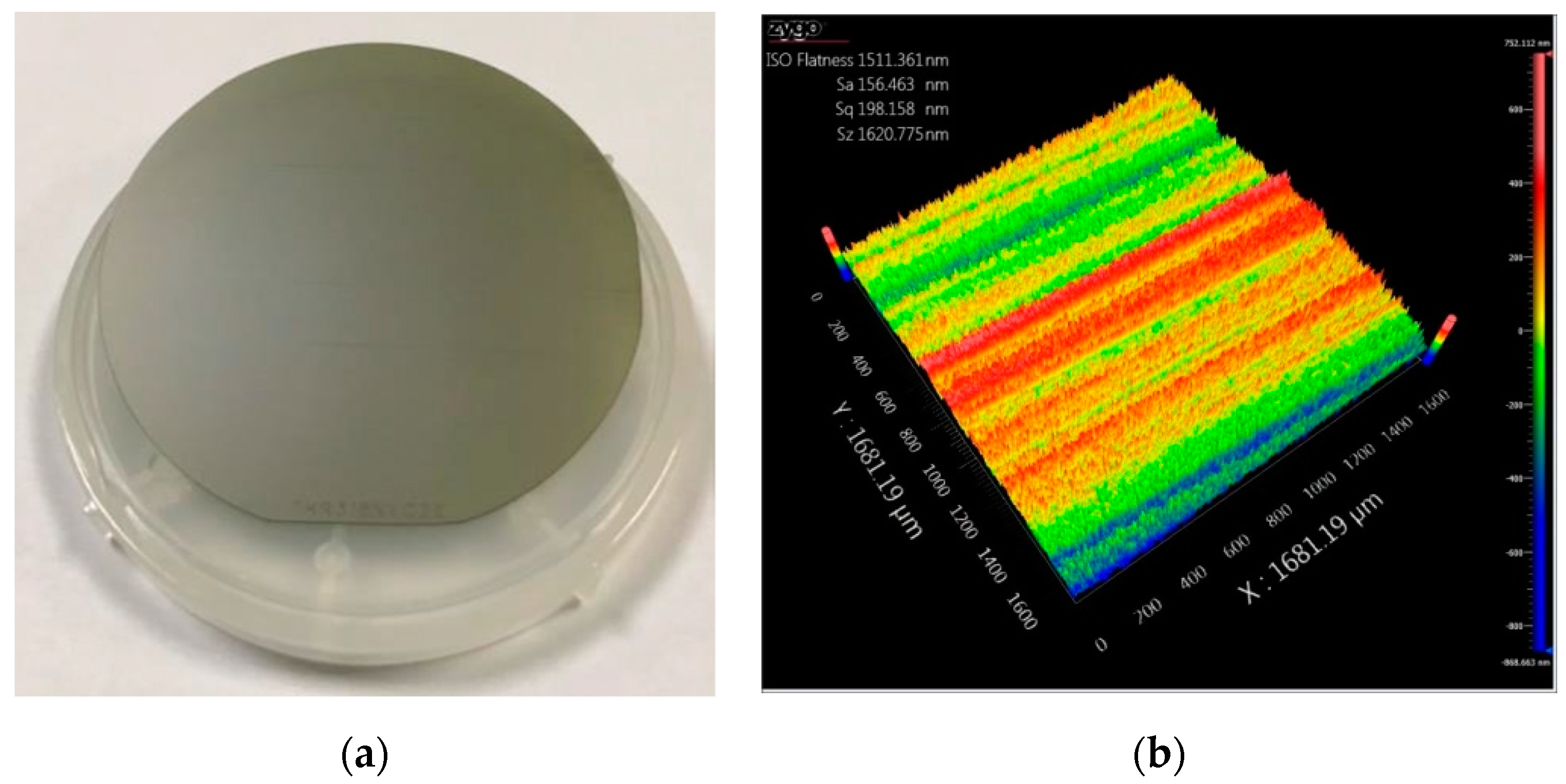

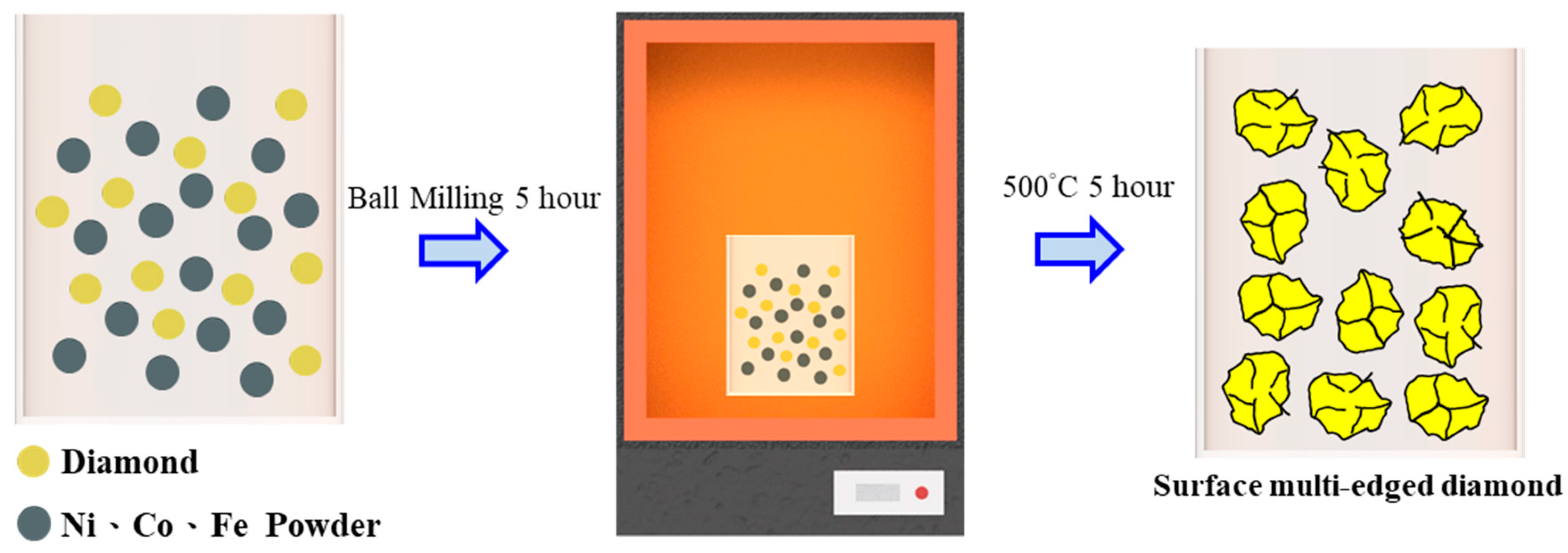
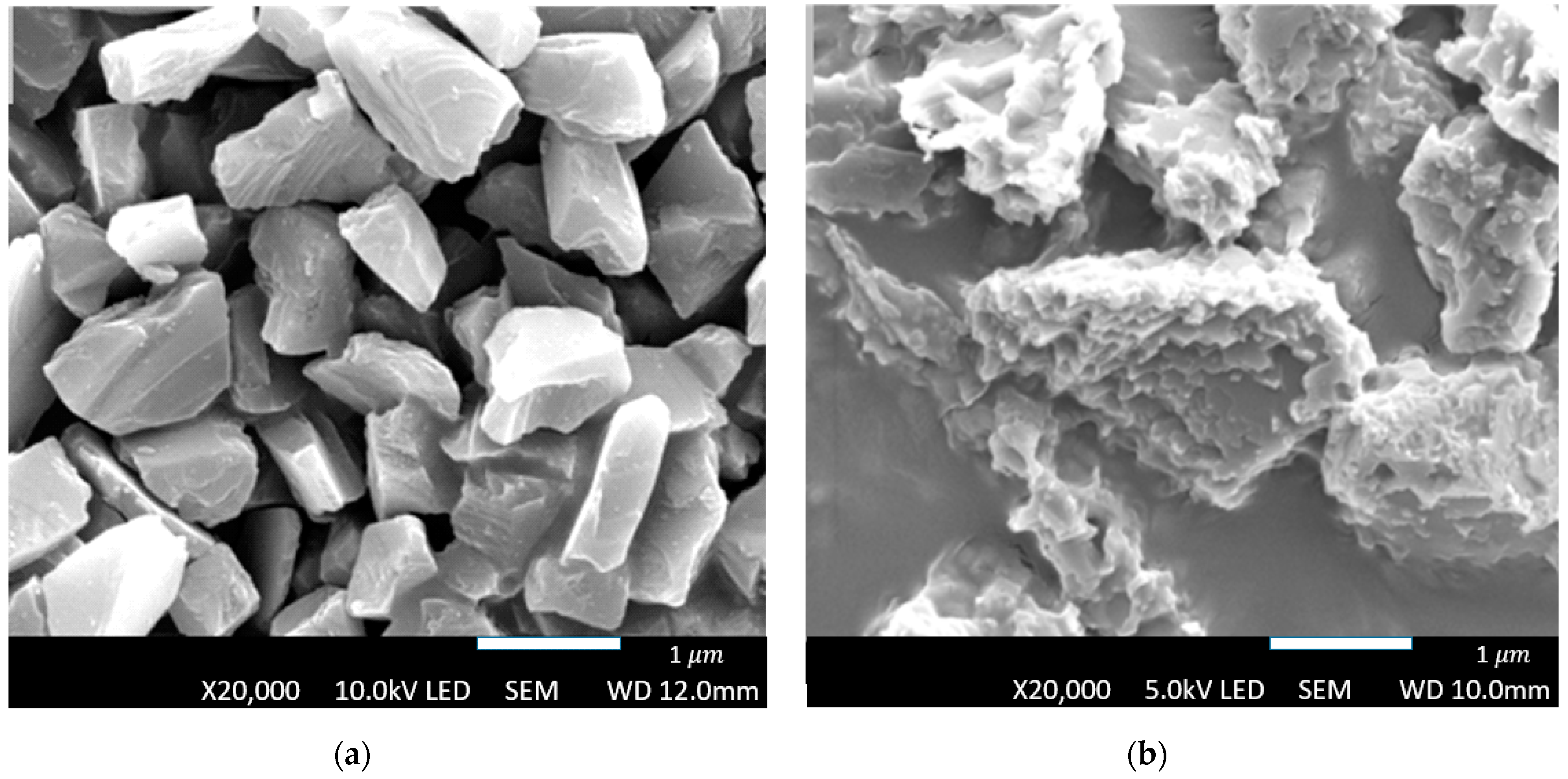
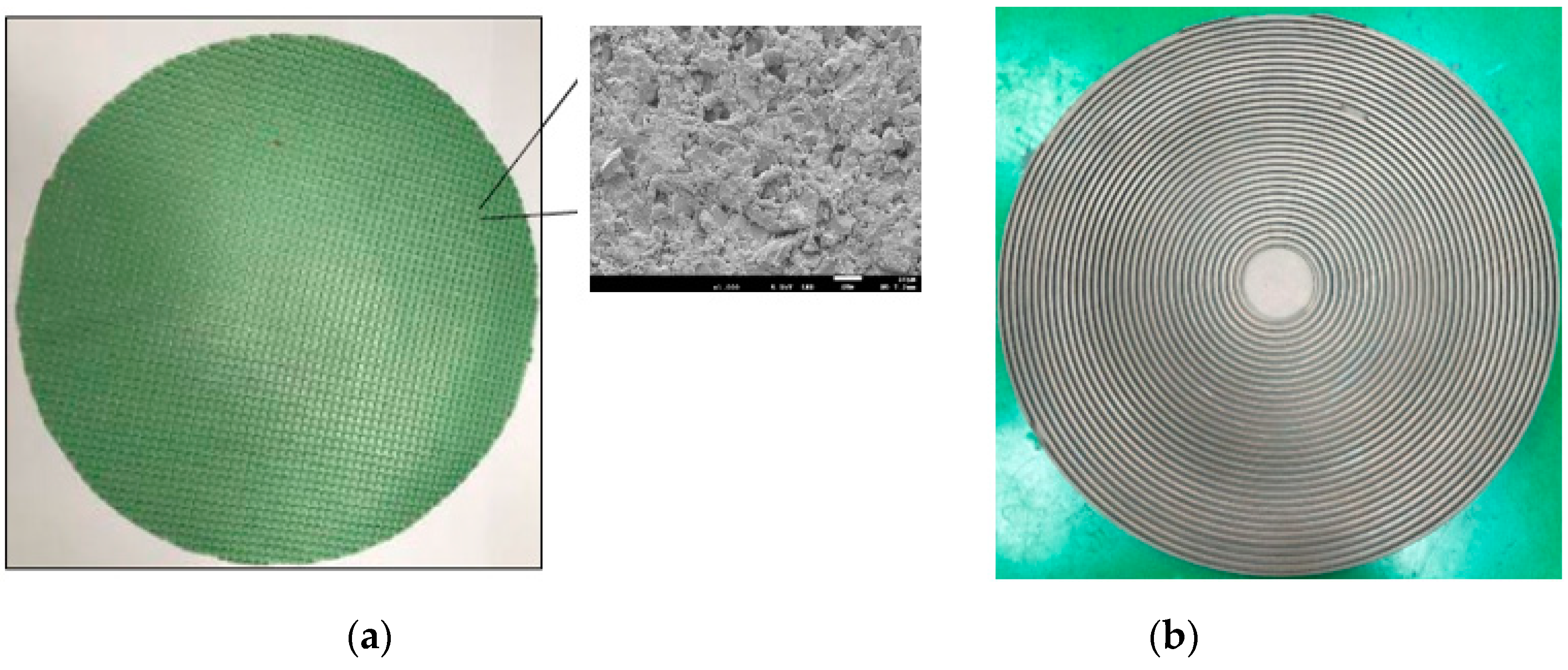


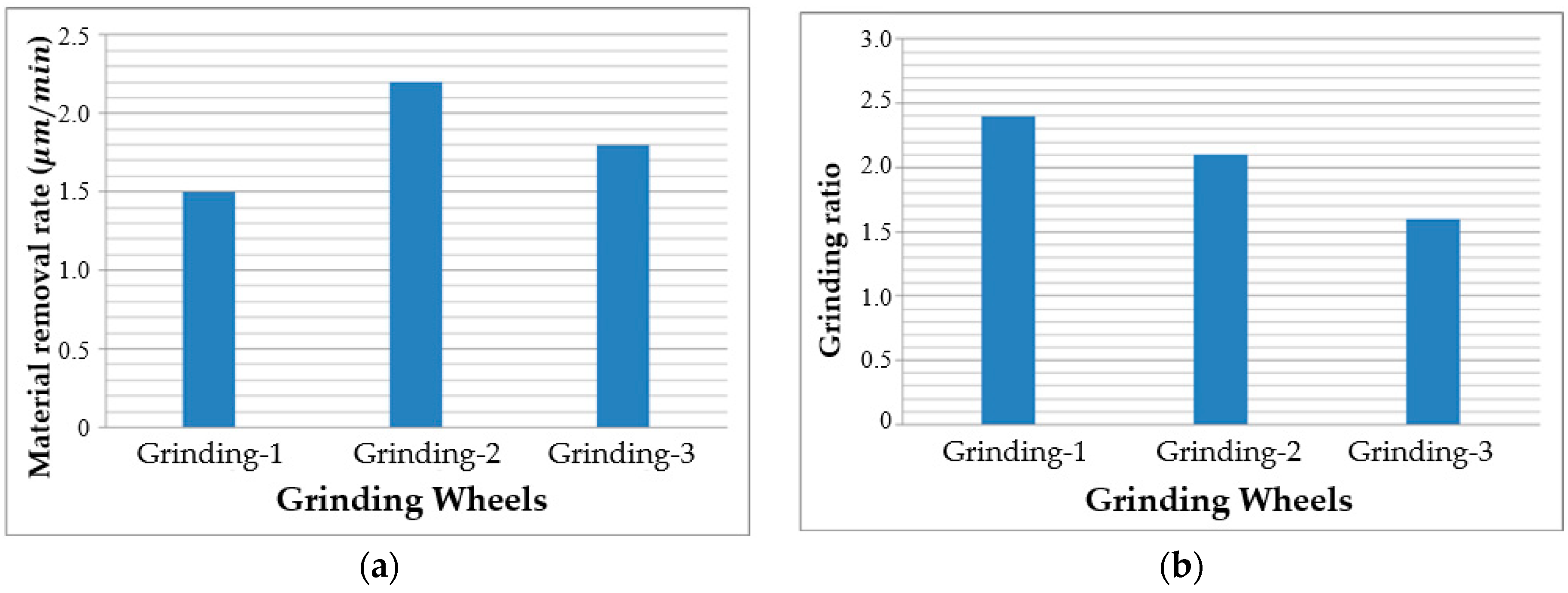

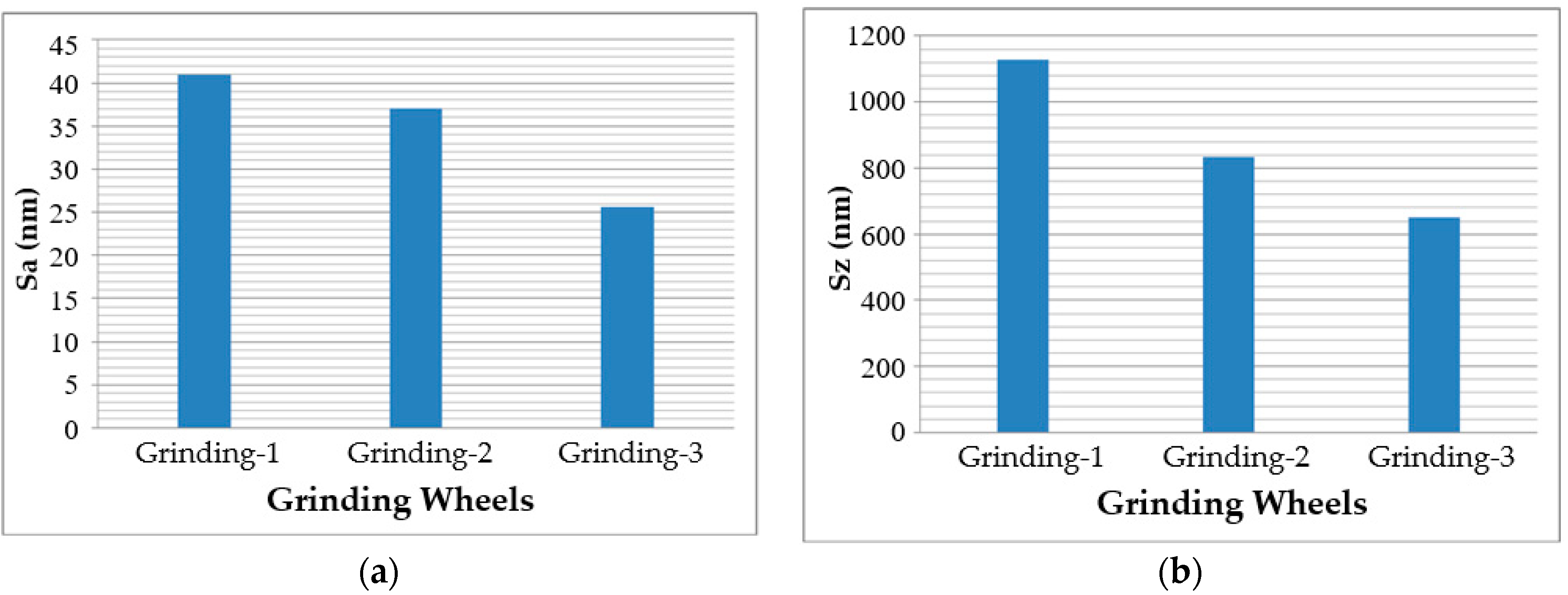

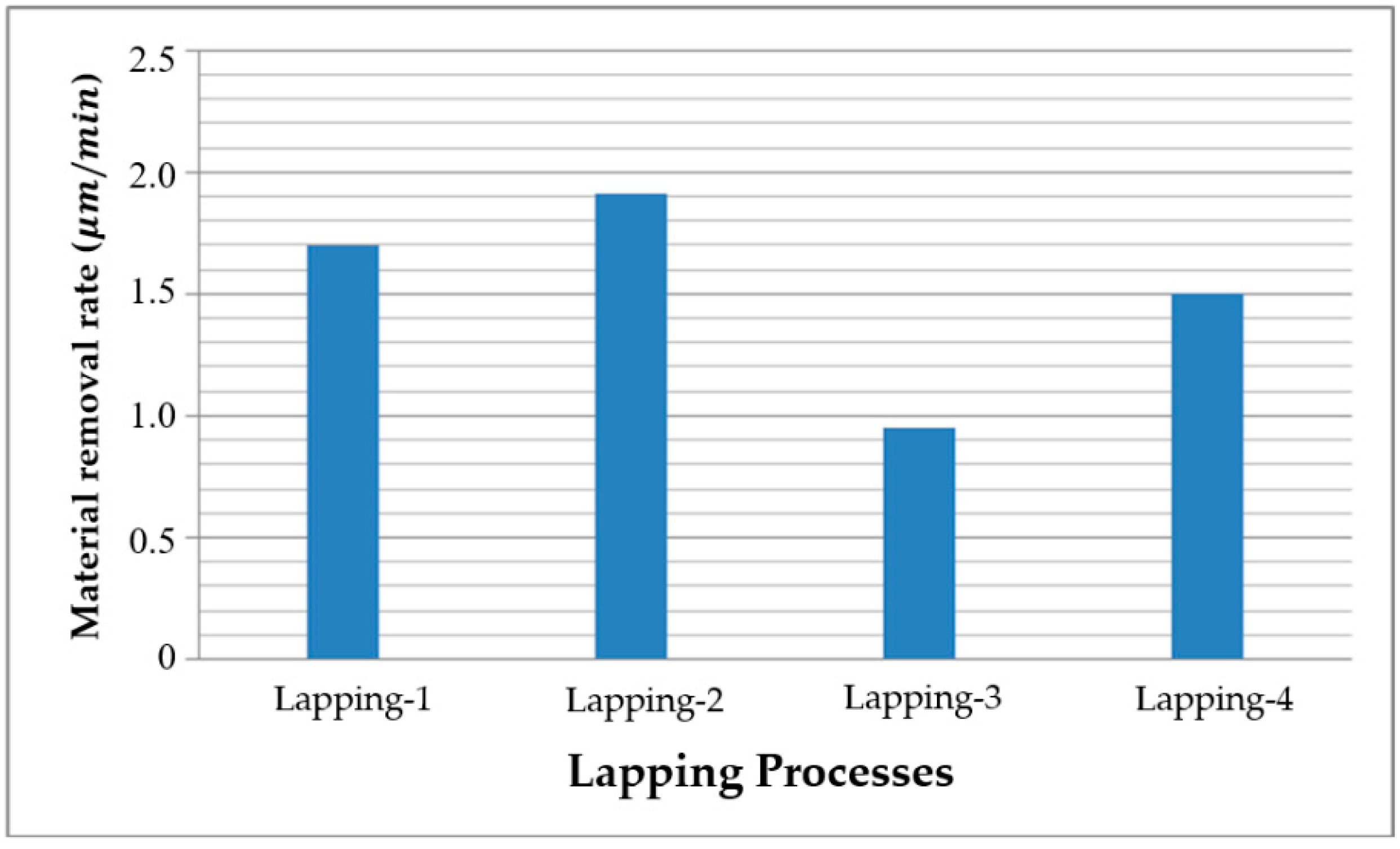
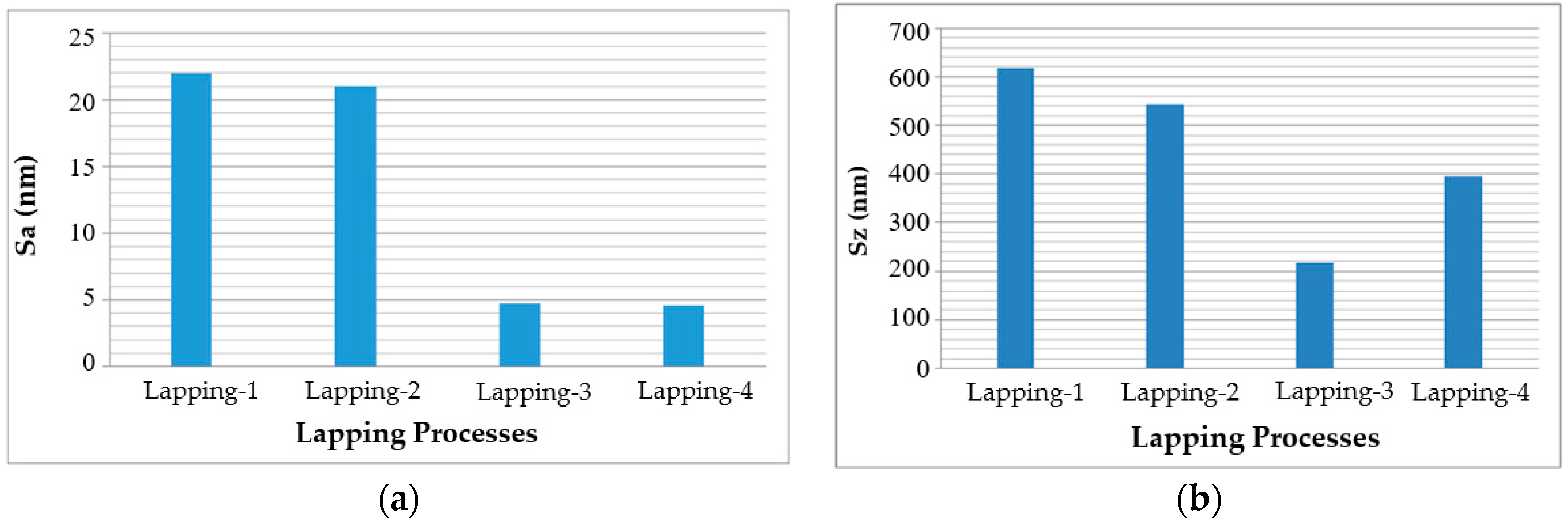




| Grinding | Diamond | SiO2 | Al2O3 | SiC | Ceramic Binder | Temperature |
|---|---|---|---|---|---|---|
| 1 | 50 v% | - | - | 10.79 v% | 39.21 v% | 700 °C |
| 2 | 50 v% | - | - | 10.79 v% | 39.21 v% | 700 °C |
| 3 | 16.67 v% | 16.67 v% | 16.67 v% | 10.79 v% | 39.21 v% | 700 °C |
| Lapping | |
|---|---|
| 1 | Copper plate + industrial diamond slurry |
| 2 | Copper plate + self-modified diamond (SMD) slurry |
| 3 | Self-made resin diamond plate + pure water |
| 4 | Self-made resin diamond plate + self-modified diamond (SMD) slurry |
Publisher’s Note: MDPI stays neutral with regard to jurisdictional claims in published maps and institutional affiliations. |
© 2021 by the authors. Licensee MDPI, Basel, Switzerland. This article is an open access article distributed under the terms and conditions of the Creative Commons Attribution (CC BY) license (http://creativecommons.org/licenses/by/4.0/).
Share and Cite
Tsai, M.-Y.; Li, K.-Y.; Ji, S.-Y. Novel Abrasive-Impregnated Pads and Diamond Plates for the Grinding and Lapping of Single-Crystal Silicon Carbide Wafers. Appl. Sci. 2021, 11, 1783. https://doi.org/10.3390/app11041783
Tsai M-Y, Li K-Y, Ji S-Y. Novel Abrasive-Impregnated Pads and Diamond Plates for the Grinding and Lapping of Single-Crystal Silicon Carbide Wafers. Applied Sciences. 2021; 11(4):1783. https://doi.org/10.3390/app11041783
Chicago/Turabian StyleTsai, Ming-Yi, Kun-Ying Li, and Sun-Yu Ji. 2021. "Novel Abrasive-Impregnated Pads and Diamond Plates for the Grinding and Lapping of Single-Crystal Silicon Carbide Wafers" Applied Sciences 11, no. 4: 1783. https://doi.org/10.3390/app11041783






